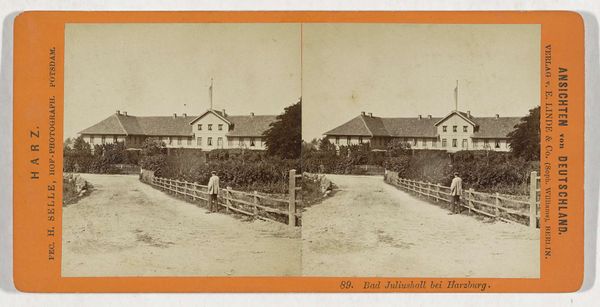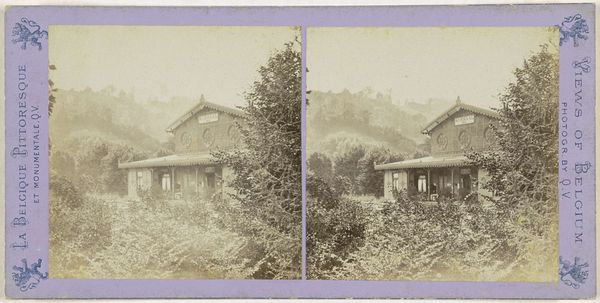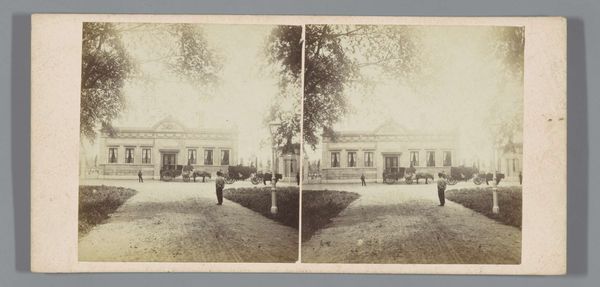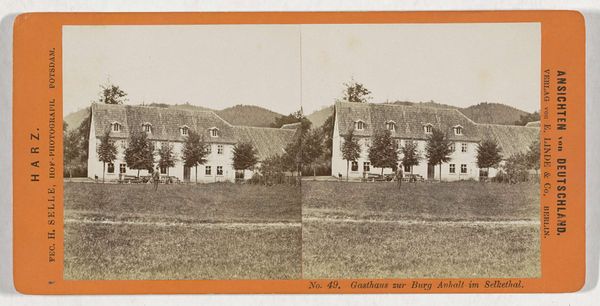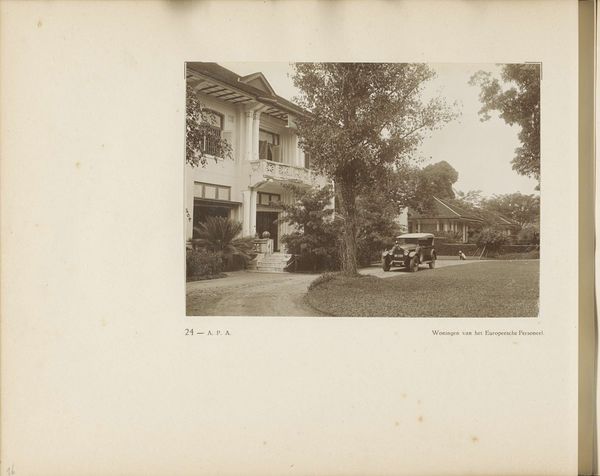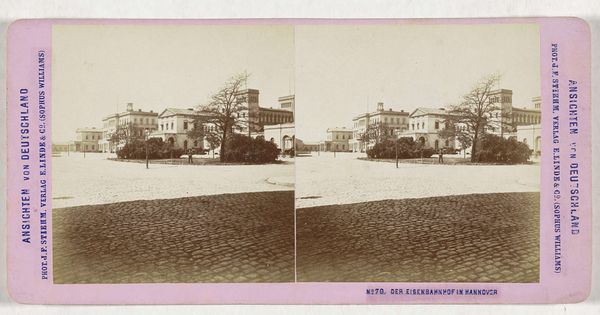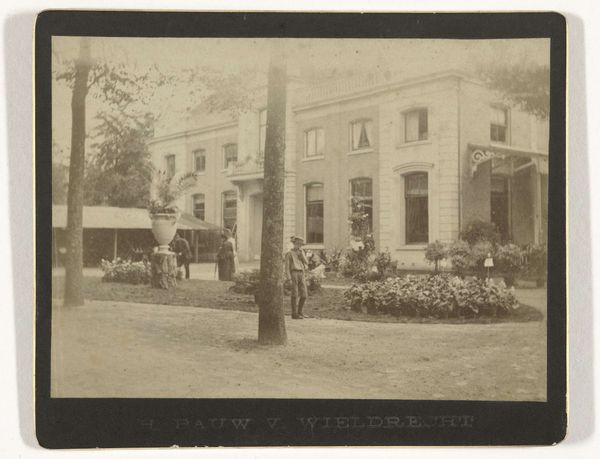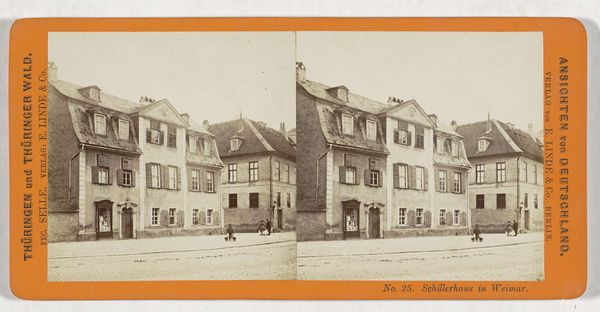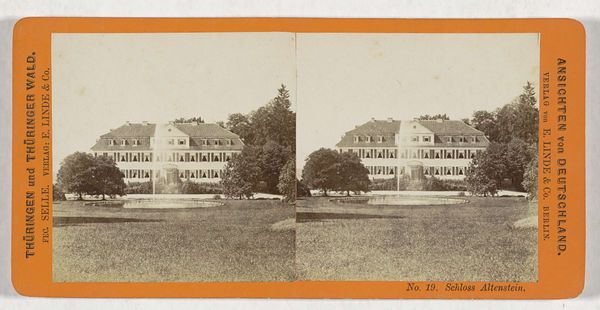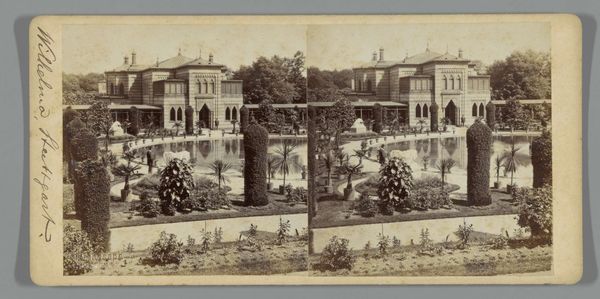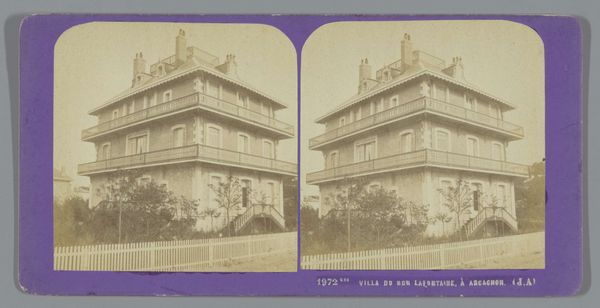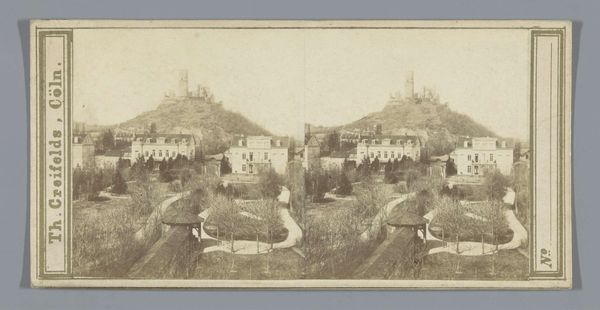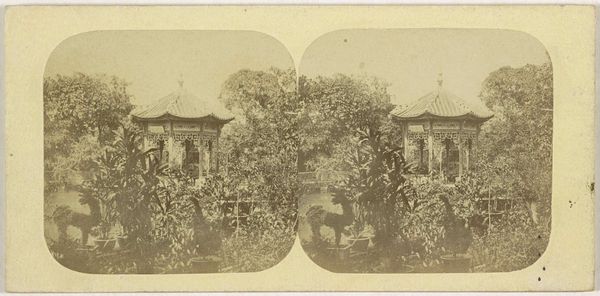
photography, gelatin-silver-print
#
landscape
#
photography
#
gelatin-silver-print
Dimensions: height 87 mm, width 176 mm
Copyright: Rijks Museum: Open Domain
Curator: Looking at this stereoscopic gelatin silver print by Hermann Selle, titled "Pension op de Stubenberg," likely taken between 1868 and 1890, I'm immediately struck by its quiet, unassuming presence. What's your take? Editor: It feels very posed, almost like a stage set rather than a captured moment in time. The subdued tones certainly lend to a nostalgic, even melancholic, atmosphere. What's intriguing to me is the carefully arranged scene—the building, the people, even the placement of the trees seem to be orchestrated to convey a specific narrative about life and leisure during the period. Curator: The landscape certainly embodies a very controlled natural aesthetic, reflecting a period keen on rationalising space and its utilization. Even the people, appearing rather still, reinforce the symbolism of stability and order, common ideals promoted within bourgeois culture in late 19th century photography. It almost reads like an architectural record intertwined with social documentation. Editor: Exactly. We see here a visual embodiment of the social stratifications and gendered roles that were prevalent at the time. The fact it is titled "Pension," we see it's not merely documenting a space, it sells an experience, a place of retreat. Who was this retreat marketed to, and what was implied within this idyllic portrayal regarding class and accessibility? Was this a deliberate act of portraying exclusion? Curator: That's a great point. A 'pension' was more than a lodging; it symbolised a specific lifestyle, connected with leisure. We see this echoed in artistic tropes of Romantic landscape painting, translated through a relatively newer photographic technology to imply something profound: a way of belonging to nature through constructed experiences. It hints at constructed identities mediated through these experiences. Editor: And let’s remember that gelatin silver prints, as a medium, enabled mass production of images like this. Therefore this "staged" experience, laden with implicit values about social order and accessibility, had a wide distribution. How does this then feed into notions of national identity and what constituted a valuable German landscape? Curator: Indeed. The act of capturing and widely disseminating images like these cemented perceptions of desirable locations within the collective imagination. The 'Stubenberg' then morphs from being merely a location into becoming an emblematic locale - where certain social identities can express belonging. Editor: So, through the careful placement of compositional elements within what appears to be a simple landscape photograph, Selle has embedded and distributed coded messages about class, gender, and identity during his time. Curator: Precisely! A fascinating glimpse into both art and social structure, encapsulated in a single image. Editor: Food for thought, certainly. Now I want to visit this pension, with my own contemporary perspective, and dissect what it signifies today.
Comments
No comments
Be the first to comment and join the conversation on the ultimate creative platform.
